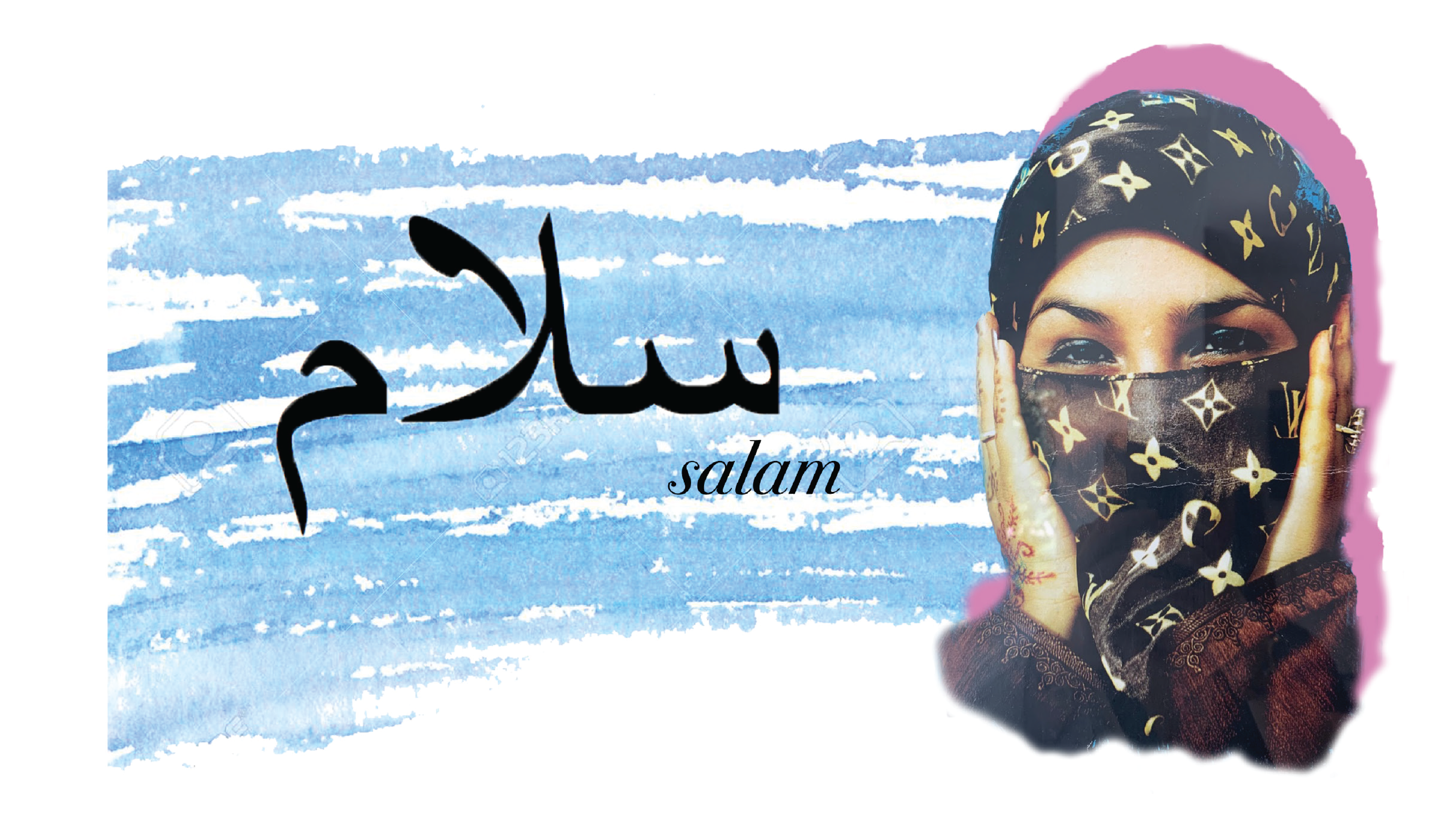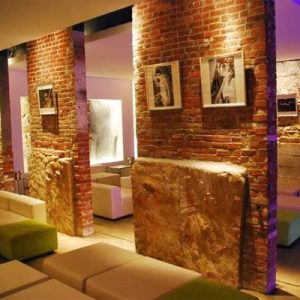In the Middle East Institute’s debut art gallery, conflict, both internal and external, rages around the room, enveloping every piece. The works in this collection perfectly display the complexities of ascertaining an identity, the challenge of maintaining a sense of culture in the face of adversity, and the daily fight to simply survive.
D.C.’s first Middle Eastern modern art gallery opened on Sept. 14 at the Middle East Institute (MEI), a non-partisan think tank that aims not only to provide research and analysis of the region but also to engage with its art and culture. The gallery testifies to the wide range of conflicts currently faced by those living in the Middle East, particularly Muslims. Each piece is imbued with an undercurrent of personal confusion and contradiction. From “Girl with a Kite,” a sculpture of a girl holding a corrugated metal kite on a string of barbed wire, to “Please Remain Seated,” featuring a life jacket made out of a scarf, to traditional oil paintings such as “Said Baalbaki,” a multitude of styles are represented in the museum. But stringing together all the pieces are the questions lingering just beneath the surface, questions of morality, religion, identity, and personal belonging.
Directly to the left of the museum’s entrance, visitors are faced with the piece “Salam, from the Confucianism series” by Mahmoud Obaidi, which depicts a variety of traditional Islamic swords spelling out “salam,” a customary Arabic greeting that literally translates to “peace.” This piece exemplifies the discord between war and peace displayed throughout the exhibit. Many of the current problems faced by people in the Middle East are violent in nature, and peace is rarely ever easy to accomplish. The route to a halcyon life for all Middle Eastern people, without fear of losing their homes or families, seems fraught with difficulty. The swords at the entrance speak to how the desire for peace and prosperity clashes with the need for a home and a place to establish one’s identity.
In a small corner of the large gallery room, a digital print with a painted background hangs on the wall. “Saida in Blue” by Hassan Hajjaj depicts a woman wearing a Louis Vuitton hijab; her henna-adorned hands press against her face. In seeming opposition to the piece’s more traditional elements, the woman is wearing heavy makeup, with bright blue eyeshadow and thick eyeliner and adorning her fingers in flashy rings. She represents the conflict between Western and Islamic ideas taking place in the Middle East today. While Western influences have in part fostered a greater degree of advocacy for women’s rights in the region, some argue that Middle Eastern women are increasingly sexualized. As Western values of consumerism and capitalism are transmitted throughout the Middle East, people are forced to contemplate questions of religion, identity, and women’s rights.
Much of the gallery focuses on the changing role of women, but “Saida in Blue” emphasizes this change most expressively. The piece appears simple, but upon observing the minutiae of the work, many new details appear. Similarly, the question of women’s rights in the Middle East is by no means simple. The question morphs into one of values, of life experiences, of identity, thus mirroring all the other simultaneous struggles for identity occurring throughout the gallery.
On the main wall of the gallery stands a huge, brightly colored canvas. Ayman Baalbaki’s “Al Mulatham” is an evocative piece that shows the modern struggle for identity more potently than any other work in the room. The foreground of the image depicts a person of unspecified gender wearing a veil that covers everything but their eyes and forehead. The paint is messy and splotchy, almost impressionist in tone, covering the anonymous individual with a patchwork of orange and red swashes of acrylic. Behind the person, the background is completely different, showcasing a traditional printed patchwork of Middle Eastern art: red, blue, and orange flowers intertwined with images of sultans draped in opulent garb.
But there is no clean break between the foreground and background of “Al Mulatham.” The red paint from the veil drips onto the background, eerily resembling drops of blood, marring the pristine, traditional artwork. The art begs the question of whether the modern Middle Eastern struggle is erasing the region’s rich, Islamic cultural history. Although both aspects of the work share the same bright red color scheme, they demonstrate themselves in completely different ways, as Middle Eastern cultural and political shifts threaten to overpower the region’s traditions and former ways of life.
In a sense, “Al Mulatham” represents what the MEI gallery is all about: the vast array of multifaceted struggles that Muslims and non-Muslims in the Middle East are facing and the way these fights manifest themselves in the work of a new generation of Middle Eastern artists. In the fight between past and present, war and peace, tradition and progress, its residents are forced to consider the question of where they should stand going forward. Truly, this is a historical crossroads, with troubling ramifications for the future. The MEI gallery offers valuable insight into the present clash of ideas, the result of which remains to be seen.





